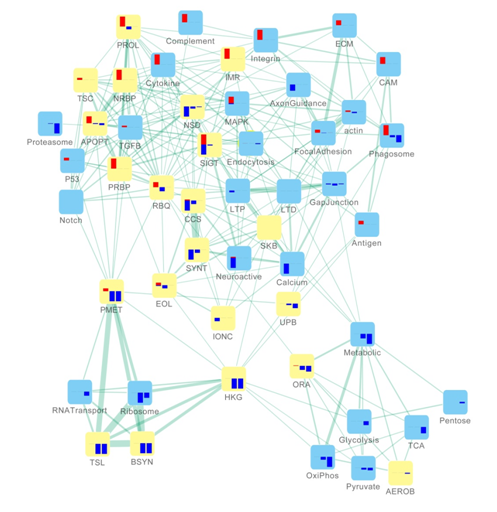Alzheimer’s disease (AD) is the most common form of dementia afflicting over 35 million people worldwide. A central issue in the field of AD is to separate the cause from the consequence among many observed pathological features, which may be resolved by studying the time evolution of these features at distinctive stages. Recently, a research team led by Prof. LEI Hongxing at Beijing Institute of Genomics (BIG), Chinese Academy of Sciences (CAS), reported the analysis of the mechanism of AD progression. Comprehensive analyses on transcriptome studies of human postmortem brain tissues from AD patients at distinctive stages revealed stepwise breakdown of the cellular machinery during the progression of AD. At the early stage of AD, the accumulation of amyloid-β oligomers and amyloid plaques leads to the down-regulation of biosynthesis and energy metabolism. At the intermediate stage, the progression of the disease leads to enhanced signal transduction, while the late stage is characterized by the elevated apoptosis. The down-regulation of energy metabolism in AD has been considered as a consequence of mitochondrion damage due to oxidative stress. However, the non-existence of enhanced response to oxidative stress and the revelation of intriguing down-regulation patterns of the electron-transport chain at different stages suggest otherwise. In contrast to the damage-themed hypothesis, Lei’s group proposed that the down-regulation of energy metabolism in AD is a protective response of the neurons to the reduced level of nutrient and oxygen supply in the microenvironment. The elevated apoptosis at the late stage of AD is triggered by the conflict between the low level of energy metabolism and high level of regulatory and repair burden. This new hypothesis has significant implication for pharmaceutical intervention of Alzheimer’s disease. The article was published online in Journal of Alzheimer's Disease on October 18, 2011. paper link: http://iospress.metapress.com/content/hh90w86562607245. A network of functional modules and canonical pathways in hippocampus at the aging, ND H, and AD H stages (Image by LEI’s group) Contact: Professor LEI Hongxing Email: leihx@big.ac.cn
